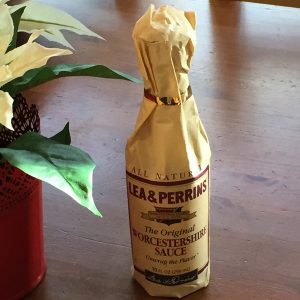
The Best Recipe for a Successful Marketing Plan
We even approach the most universal dilemma of the day – “what’s for dinner?” – with a marketing slant. If we were chefs by profession, our take on popular meal kit delivery services would be much different. But as marketers, we are just as interested in the brand building as the perfectly proportioned spice packets.
Here’s what our recent experience with Blue Apron meal kits reminds us about the essential ingredients of effective marketing (as well as incorporating kale into a healthy dinner).
The Main Ingredient: Solve a Problem
Solving a problem is the keystone of all marketing. Blue Apron and other meal kit delivery services offer an easy solution to the common time-consuming challenge of planning, shopping and preparing a meal.
Takeaway: Whatever you are selling, focus on the benefits to the end-user.
Mise En Place: Everything In Place
Top chefs stress the importance of prep time, to make sure all the essential tools and ingredients are in place and easy to find. This same principle applies to building a brand through a well-planned marketing campaign from the start.
While lamenting my lack of a dinner plan to a colleague, she forwarded me a Blue Apron email with a coupon code and said her family was enjoying the service. I was familiar with the brand because I had seen Blue Apron ads on Facebook and noticed some friends were fans. Blue Apron had everything in place to convince me to give them a try: a friend’s recommendation, a coupon code that worked and brand recognition through social media. This was no coincidence; it was a well-coordinated effort to get my business.
Takeaway: Think about where your customers will find you and take the time to develop a consistent, multi-channel marketing plan.
A Good Presentation Makes It More Appetizing
“That looks good!” A great meal employs all the senses – it smells good, looks good, and has a nice texture. Great marketing invokes the senses too. The Blue Apron website is visually pleasing and easy to navigate. The site’s images are beautifully photographed, and the meals look delicious. The shipping box and meal kit are nicely branded. The recipe card is well designed and printed on high quality paper stock. Blue Apron purposefully makes a great presentation at every step, with top quality details you can see, feel and taste.
Takeaway: Pay attention to the details. Good photography, clean design and quality packaging can really make a difference and will set your business above your competitors.
Easy to Follow Recipe
How many times have you scrolled through Pinterest or flipped through a cookbook and ruled out a recipe because it seemed too complicated? Blue Apron simplifies meal preparation – but more importantly, they make it easy to join, select meals and pause meals. They offer free shipping with an exact shipping date. They also make it easy to cancel a plan or contact customer service.
Takeaway: Keep it simple. Make it easy for customers to buy your products. Most customers want to know about return policies and shipping before placing an order, so make sure this information is easy to find.
Share a Meal With Friends
“Try this!” A delicious meal is even better when shared with friends. Blue Apron does a great job of turning happy customers into brand ambassadors through social engagement. They encourage customers to share their meal pictures on Shapchat, Facebook and Instagram. They rely on the power of referrals, allowing members to send free meals to friends and family.
Takeaway: Encourage customers to share pictures, reviews and referrals.
Adjust to Taste
A favorite recipe evolves over time, with substitutions and adjustments. While this blog post was in the works, Internet Retailer published a story about Blue Apron’s recent IPO filing. According to Internet Retailer, Blue Apron spent about 17% of its total operational spending on marketing last year. In fact, Blue Apron warns potential investors of the high cost of acquiring and retaining customers. Notably, Blue Apron reported 92% of revenue in 2016 came from repeat customers.
Takeaway: Customer acquisition can take a big chunk of your budget. Good marketing analytics are necessary to assess the costs and returns of your marketing spend. Just as you modify a recipe to your taste, you’ll need to evaluate and adjust your marketing plan, using analytics to guide you. In addition to marketing, it is also important to consider the other ingredients that affect customer acquisition and retention such as fulfillment, operations and competition.
Learn more about Marketing Analytics.


